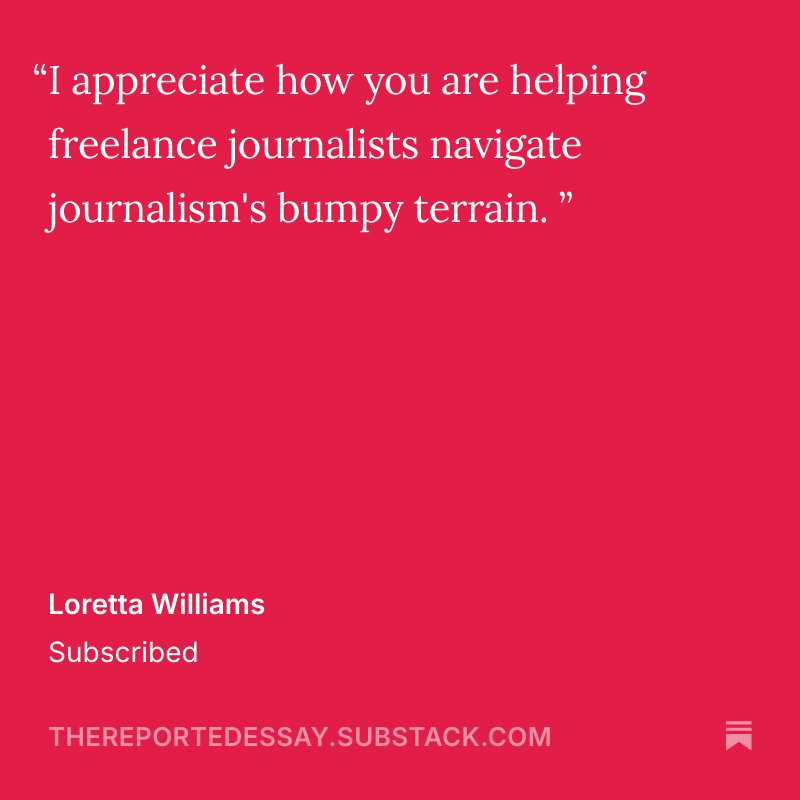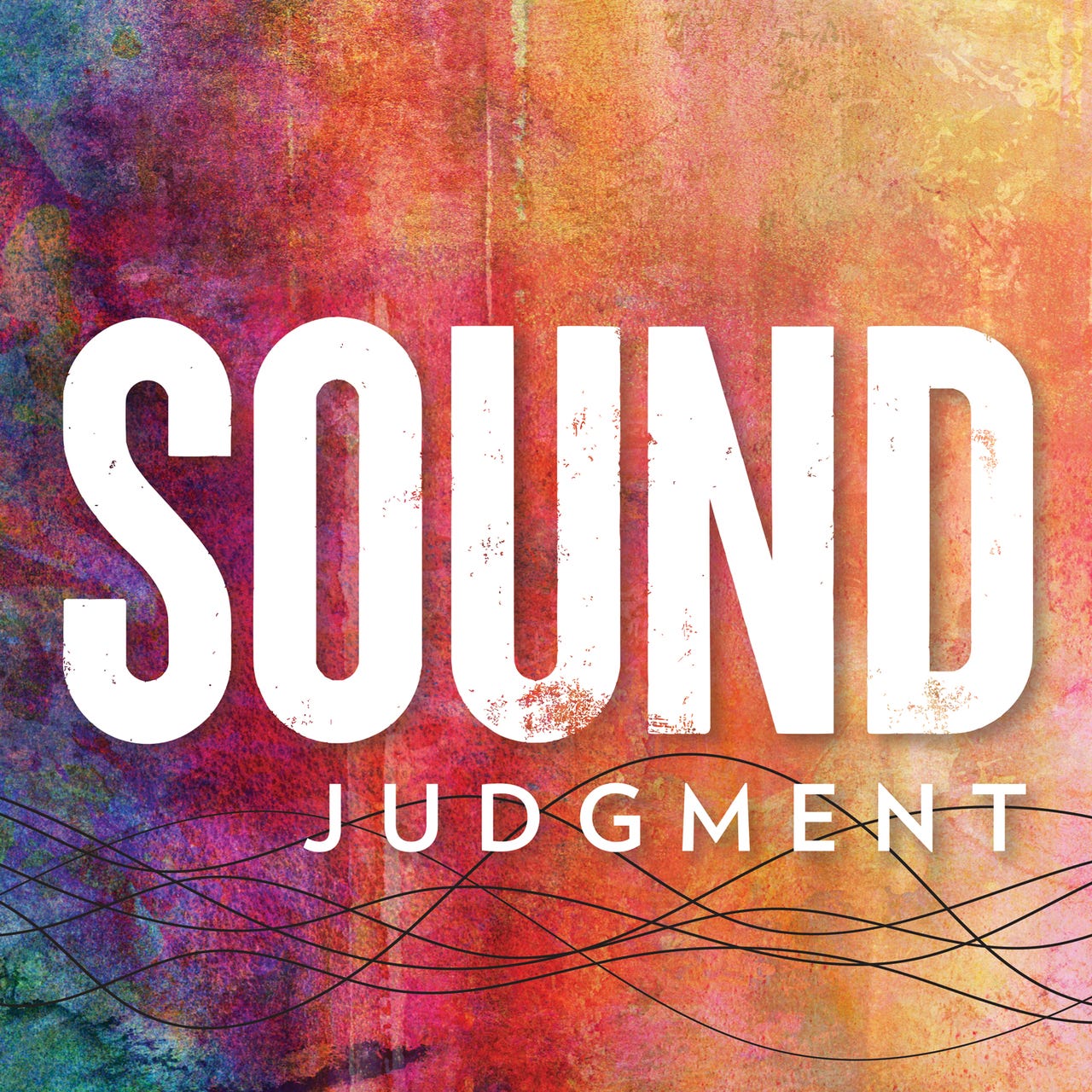Longformer Newsletter Spotlight #1
Substacks to follow by writers of narrative nonfiction, magazine features, reported essays, longform & literary journalism
Today I’m starting a new series, the Longformer Newsletter Spotlight, sharing newsletters from journalists and nonfiction writers that I am enjoying, published by writers I appreciate and admire.
To kick it off this week, I am featuring 12 newsletters (with more to come) by narrative nonfiction storytellers who produce books, magazine articles, longform, reported essays, video or audio + one bonus brand new newsletter shout-out.
Some of these writers go behind the scenes of their work and process. Others offer occasional craft or writer’s life lessons. Many use their newsletters as an extension of the work they are already doing, with updates and offshoots. Some also provide additional depth to books or stories they’ve written or offer original content (short essays, interviews, reviews) in the niche area they already focus on, whether it is music, food, parenting, science, culture, the environment, teaching, etc.
Last year, when I interviewed former GQ editor Chris Gayomali, who publishes the health and wellness newsletter HEAVIES, he told me he aims to make his Substack “intertwine” with the writing he is already doing for other publications. I took this advice to heart when starting The Reported Essay, which I created to support my own publishing and as an extension of what I have done for 15 years inside my college literary journalism classrooms—story dissections, discussions of reporting, craft, and writing life advice, interviews with editors, freelancers, and nonfiction authors, along with other recommendations.
But it is also for those of you who want to do more ambitious or creative work, or who maybe don’t hold a full-time job in journalism anymore but still want to sometimes write and publish pieces you care about. And it is for editors, as well as other teachers of narrative nonfiction and feature storytelling. Or for those of you who may not have a journalism background but would like to incorporate research, interviews and reporting into stories that include first-person writing.
If you like this newsletter, please do consider keeping it going and helping pay for copy editing, all for the cost of a cold brew—a $5 a month subscription. I deeply appreciate all of you. Here are a few testimonials from paid subscribers on why they support The Reported Essay:
Just yesterday, a freelance journalist reached out to me asking: “Should I start a Substack?” The answer is really going to be different for everyone, and it depends on your own goals. But before you do, I think it’s useful to spend some time studying other journalists who are doing it already. Having an authentic niche can be key. Take, for example, these journalists who have pivoted to publishing about running or financial coaching.
For any of you thinking about starting a newsletter, here is a helpful interview by Katherine Reynolds Lewis of the Institute for Independent Journalists with Lex Roman, who runs the newsletter Journalists Pay Themselves.
A New Story
Speaking of making your newsletter work in conjunction with your freelance stories, this week marks five years since the start of the Covid-19 pandemic, and I just published a longform story for Men’s Health, which also drops on Apple News+ on March 27th, about the mysteries of long COVID.
As many as 20 million Americans and at least 400 million people worldwide currently suffer from long COVID, a debilitating illness that still has no approved treatment and is often misdiagnosed and misunderstood. My feature centers on the relationship between a pulmonologist who suffers from the disease and a biohacker who has it too. Both are bonded by their quest to feel like themselves again.
Thank you to my editor Rachel Epstein for assigning this story and working with me so closely on it, and to the thorough and thoughtful Hearst fact checkers.
In coming months, I will continue collecting an ever-growing list of longformer newsletters. Only a small fraction of the ones I have come across so far are mentioned here today. But I will continue to add and spotlight more along the way. And if you have a newsletter you want to share with me, please do send me a note!
Longformer Newsletter Spotlight Part #1.
- is named for his book DREAMLAND: The True Tale of America’s Opiate Epidemic, which won the National Book Critics Circle Award for Best Nonfiction Book of 2015. Sam Quinones has written four books of narrative nonfiction and has worked for four newspapers, including the LA Times from 2004 to 2014, as well as for many years as a freelance journalist. His newsletter features interviews and podcasts, stories he has written or admired, as well as ideas about storytelling, like how to find stories and structure them. He recently started a new series for his newsletter, “Goodwill Book Reviews,” in which he finds books at used book stores while digging through their bins and reviews them. Such a fun idea!
- is a freelance journalist and audio producer, who has produced work for National Geographic, Science Magazine, The Atlantic, and NASA’s Curious Universe podcast. His newsletter, The Science Reporter’s Cut, goes behind the scenes featuring notes, interviews, photos, research, interviews, fieldwork, and fact-checking that goes into making compelling journalism. Elliott delved into the fact-checking process for his 4,600-word feature story on “The Secret Sex Lives of Deep Dark Corals” for Hakai magazine, and his process of pitching and writing a reported essay on how “Carbon Capture Scale Up Brings New Problems to the Midwest.” For reported essays, Elliott writes:
“Your own experience and personal connection to the topic is what makes the essay work, but the piece has to be grounded in science and research.”
- is a journalist and author whose work appears in The New York Times, Rolling Stone, The Atlantic, and GQ. He is the author of When Crack Was King: A People’s History of a Misunderstood Era, a finalist for the National Book Critics Circle Award and named a best book of the year by Time, The Washington Post, NPR, Chicago Public Library, Publishers Weekly, She Reads, Electric Lit, The Mary Sue. Last year, Ramsey talked to The Reported Essay and my students about his approach to reporting and how he wrote his book. Ramsey’s newsletter, Had Happened, offers notes on survival, on culture, on how we live—and the stuff that keeps us going.
- is a journalist who spent 15 years in the magazine world and began a radio career in 2003 at Boston’s WBUR, later working at New Hampshire Public Radio and Colorado Public Radio. More recently, she produced 600 episodes of Wondery’s Business Wars Daily, which was downloaded 10 million times. She has been publishing Sound Judgement, the newsletter and podcast, since late 2022, hailed by audio storytellers as “your online master’s degree in audio storytelling,” and “a masterclass in podcasting.” Sound Judgment regularly dissects craft and story questions, and her lessons are valuable to all forms of narrative journalism. Grant recently published this piece on elements of a winning pitch, which is part of a series.
- , a longtime New Yorker writer and the author of nine books, including The Bullfighter Checks Her Makeup; My Kind of Place; Saturday Night; On Animals; Rin Tin Tin: The Life and the Legend (which is being adapted for the screen by Nick Hornby); The Library Book; and The Orchid Thief, a narrative about orchid poachers in Florida, which was made into the Academy Award-winning film "Adaptation” starring Nicolas Cage and Meryl Streep. I’ve enjoyed assigning The Orchid Thief in the past in my classes at the University of California Irvine’s Literary Journalism Program, where students also regularly read her classic 1992 Esquire story “American Male at Age 10.” I also appreciated a recent post Orlean wrote discussing writing for both The New Yorker and Substack:
“The New Yorker’s refinement sort of speaks for itself. But I’ve loved writing for Substack; I love the immediacy of it, and honestly, the unmediated nature of it. I like that no one has approved of what I’ve written, so that it feels like a direct conversation rather than a polished manuscript.”
- is an award-winning journalist who’s covered Ukraine’s LGBTQ movement and Russian homophobia for a decade. A former international LGBTQ correspondent for BuzzFeed, his work also appears in The New York Times, Rolling Stone, and Politico. Feder has been interviewing and photographing LGBTQ Ukrainians since the earliest days of the Russian invasion, documenting the stories of soldiers, refugees, and survivors of war crimes. His Substack is named for his forthcoming photo and oral history book about Ukraine's LGBTQ community and the war with Russia entitled The Queer Face of War.
- is a longtime conservation and environmental journalist and the author of Beloved Beasts: Fighting for Life in an Age of Extinction, a critical history of the modern conservation movement. She is a contributing editor for High Country News, whose writing has also appeared in National Geographic, The New York Times Magazine, The New Yorker, and The Atlantic, and The New York Review of Books. She is also the author of this excellent guide: The Science Writers' Essay Handbook: How to Craft Compelling True Stories in Any Medium. Her newsletter, Conservation Works, is about what’s working (and what’s not) in conservation today, and sharing new findings from research and on-the-ground experiences.
E. Tammy Kim is a contributing writer at The New Yorker who covers a range of subjects, including politics, labor and the workplace, and the Koreas. Her first career was as a lawyer. Kim is currently reporting on the federal workforce, and has interviewed more than seventy current and former employees located all over the U.S. and abroad in a New Yorker series called “Deep State Diaries.” Her newsletter, TKTKETK keeps us up in the loop on her reporting and other updates. This week, she profiled “Steven,” a claims representative at the Social Security Administration who helps poor and disabled Americans. Before that, she wrote about Zain Shirazi, a former government lawyer whose commitment to equal opportunity was inspired by his family’s experiences after 9/11.
- is a journalist who has been covering the lives of immigrants, refugees and migrants for 15+ years. Her work has appeared in The New York Times, The Washington Post, Elle, The Guardian, NPR, and more. She documented the largest refugee crisis of the last decade while reporting from Bangladesh’s refugee camps, and uncovering routine harassment of women in the country’s garment industry. As an independent journalist, she has documented her mother's journey as a child bride, a South Asian American woman charged with feticide, and sexual violence against Rohingya widows. Her newsletter, Port of Entry, centers the voices of immigrant, refugee, and migrant communities. I also found her post, “That one time I went undercover as a sex worker in Bangladesh,” illuminating.
- is a writer, poet, and editor who previously worked as an editor at The New Yorker, before joining Slate in 2001 as a culture editor and literary critic, and launching the Slate Audio Book Club. She joined The Paris Review in 2005 as the magazine's poetry editor. She is the author of the New York Times bestseller The Invisible Kingdom: Reimagining Chronic Illness (2022); the bestselling memoir The Long Goodbye (2011); and the poetry collections Sun In Days (2017), which was named a New York Times Best Poetry Book of the Year; Once (2011); and Halflife (2007). She is currently the editor of The Yale Review. Her Substack delves into craft lessons, like how to integrate research into narrative and techniques for writing first-person in nonfiction.
- is a contributing editor at Esquire, also writing about music, politics, LGBTQ+ life and pop culture for places like Rolling Stone, The New York Times, the Los Angeles Times, The Washington Post, Oxford American, Slate, and Pitchfork. Covington’s Substack, “Gimme Pleasure!,” keeps readers updated on her latest stories and offers reflections on culture, conversations, and music. Covington spoke last year to The Reported Essay about music writing, as well as pitching and writing her longform piece for Rolling Stone: “Inside the Highs and Lows of Sapphic Pop’s Banner Year.”
- is an award-winning freelance writer, journalist, and filmmaker based in Berlin, Germany and Cleveland, Ohio. He often writes for The New York Times Magazine, The New Yorker, and other publications. His newsletter, The Fugitive World, named after his forthcoming book, began as a place to write about journalism and the craft of nonfiction writing, which he has taught. But he also writes about his published work, reports from the field, his book-in-progress, and more. Last year, Mauk published a captivating New York Times Magazine piece: “He Made a Daring Escape From China. Then His Real Troubles Began.” I’ve also previously assigned Mauk’s story, “Inside Xinjiang's Prison State,” to students in my digital narratives classes. It is an incredible immersive V.R. and interactive feature on life inside a Chinese reeducation camp, which received an Emmy Award and Peabody Award for The New Yorker.
New Newsletter Shout-out:
In the journalism world,
is a former senior reporter covering racial inequity at The Guardian. For more than seven years, Rios also covered education, civil rights, and cultural phenomena for Mother Jones. But Rios is also a DJ/producer who goes by Black Panda the artist, and co-leads an initiative known as the BIPOC Beats Collective, an effort started in 2023 focused on diversity in music. His newsletter, On Beat, explores art, craft, and cultural happenings.





















Thank you so much for the shoutout Erika! Your newsletter is a gift 💚
Subscribed, this is exactly the kind of thing o was looking for